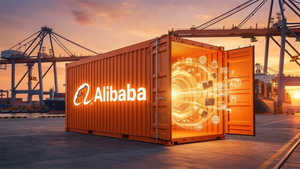Marco Alverà speaks with IHS Markit Vice Chairman Daniel Yergin for a new edition of CERAWeek Conversations – available at https://ondemand.ceraweek.com/cwc
Current supply crunches and the longer-term future of energy transition underscore the need for a lot more natural gas and the capacity to store it, the CEO of a leading global energy infrastructure operator says in the latest episode of CERAWeek Conversations.
In a wide-ranging conversation with Daniel Yergin, vice chairman, IHS Markit (NYSE: INFO), Marco Alverà, CEO of Snam talks about why the market dynamics behind the current energy crisis in Europe are “much more than European;” the need for greater investment in gas storage; and the future of gas in the energy transition.
Alverà also discusses how technological breakthroughs and economies of scale can unlock a “revolution” in hydrogen; and the potential to turn existing pipelines into “forever infrastructure” that carry the fuels of the future.
The complete video is available at: https://ondemand.ceraweek.com/cwc
Podcast version available: CERAWeek Conversations is also available via audio podcast on Apple Podcasts, Google Podcasts, Soundcloud, Spotify and Stitcher.
Selected excerpts:
Interview Recorded Tuesday, September 28, 2021
(Edited slightly for brevity only)
- On the market dynamics behind Europe’s natural gas crunch:
“It’s much more than European. It’s a non-U.S. and non-Russia crisis. It’s a crisis for all the people who are buying LNG. LNG has become the price setter, so all those countries relying on LNG, their prices tend to be aligned right now. China has been building a lot of demand during the COVID period. We woke up from COVID with not only the post-pandemic growth in the industry but a lot of homes in China have switched from coal to gas. China has added a market almost the size of the U.K. in the last three years. At the same time Europe has diminished its own production by a quarter of the size of the U.K.—almost 20 billion cubic meters over a three-year period. You have this decline in domestic production [and] stability in conventional supply coming from Russia and Norway, and unexpected growth in China. When the market gets so tight with demand exceeding supply, prices really skyrocket.
“Storages aren’t full which is not good looking at the winter ahead and storages aren’t being filled because the market is in a backwardation, which means forward prices are way below the current prices, so no trader wants to put money underground at today’s prices; and we’ve had a very cold April which is always the month that really matters for starting the storage season.
“It’s a very cyclical market. The bottom line is that we need a lot more storage. We haven’t been investing enough in storage. The U.K. is very short of storage. Italy is in a good position, but Germany and the Netherlands have very low inventories. It always strikes me that we have a lot of strategic petroleum reserves, but in most countries, we don’t have any strategic gas reserves.
“Governments have already gotten involved. In the U.K. the taxpayer had to subsidize some producers of ammonia that were indirectly producing CO2 that was necessary for the food chain and for the nuclear industry and for hospitals. It’s very unusual to see the U.K. government step in and just subsidize in a period of two days different U.S. businesses. In Italy the government committed 3 billion euros to help reduce the impact of rising prices especially on the more vulnerable part of the population. If you have poor people in cold places and prices increasing by 100%, there’s really some social issues that politicians have to deal with.”
- On natural gas storage solutions for the European market:
“We’re lucky to have in Italy a great regulation similar to what we have in France. You have a regulated asset, and you offer capacity to traders at a fixed price which is quite low, and they are incentivized to fill it up with cheap summer gas so they can take that cheap summer gas out in the winter. If you have a merchant system like you have in Germany, when you have such volatile markets, no one is going to take the risk to put their money in the bank and not know how much it’s going to be worth when they have to take it out in a few months. We are very much in favor [of] at least for some amount of baseload storage: It should be regulated, it should be mandatory, it should be strategic, exactly like we have for oil. After World War II every country made it mandatory to have strategic petroleum reserves. And then in times of an oil crisis you have governments that can free up those reserves and free up inventory and it has a positive impact on prices as well.
“There’s some work we can do before this winter. We can fill up storages quite quickly if we got the right incentive. There could well be a package at the European level where… some kind of consortium of buyers buy it and store it. The beautiful thing about gas, like oil, is you can keep it there for a season, a year, a decade; you can just store it there, it’s not going to lose any value.”
- On the role of gas in the energy transition:
“We need a lot of natural gas. If I look at a country like Germany they are essentially today running on nuclear, coal and diesel, and for different reasons have decided to abandon nuclear, abandon coal, and significantly diminish their share of diesel. So, they need to rely on gas and eventually to get to net zero they need to replace that gas with renewable gases which is going to be a combination of biomethane, blue hydrogen and green hydrogen. We need gas to manage the volatility in renewables. One of the reasons why gas prices are so high is also because we’ve been missing 20 gigawatts of wind just in the U.K. compared to last year. All you need is a year, or a season, or a week, or a month with no wind. You need to have that energy stored underground somewhere to be taken out.
“If you’re in the east coast of the U.S. or here in Europe we consume six times more energy in the winter than we do in the summer. That energy today is all natural. It’s all stored inventory natural gas. We need to keep that as an inventory and then we need to decarbonize it by using CCS, by turning it into blue hydrogen or green hydrogen.”
- On technology pathways to make green hydrogen cost-competitive:
“What no one has focused on is that the electrolyzers, the machines that you need to turn solar energy and water into hydrogen, these kits are essentially handmade. They are a niche industry, very small volumes, no factories, no standardization. We interviewed all the electrolyzer manufacturers and launched a global conference in Rome three years ago and we discovered that if you standardize production, you can get costs really low.
“We have offered to the COP what we call the “moonshot.” We’ve organized ourselves with several other companies to commit to making green hydrogen in five years cost competitive with $50 per barrel oil, which means getting it from $120 per megawatt hour all the way down to $50. When we presented this to the [U.S.] DOE they ran their own numbers, and they came out with the “earthshot” which is to make it cost competitive with coal by the end of the decade. That is the end game because if you get it to $25 per megawatt hour that’s the only way we can convince India, China and Asia to stop building new coal plants and to switch directly from coal to hydrogen. I think in five years we can get it there. In our model, working with producers we came up with 25 gigawatts of electrolyzer demand [as] the number that gets entrepreneurs to build factories and for factories to bring down the costs. The IEA said they reckon the world will have 850 gigawatts of electrolyzers.”
- Comparisons in fuel efficacy between natural gas and hydrogen:
“Natural gas is better because it’s more dense. You can store it more easily, you can transport it more easily, it’s less flammable, it’s safer. The problem is it has CO2. So, we’re either going to be taking the CO2 out of the natural gas—and I’m also a big fan of just CCS in general. In the future we’re going to have a natural gas pipeline, or maybe a biomethane pipeline, we will have a hydrogen pipeline and we will have a CO2 pipeline because some utilities will continue to use gas in their turbines, and it will be cheaper for them to take the CO2 out of the turbine than to convert it all to hydrogen. But there’s a lot of optionality, depending on what infrastructure is already in place. The good news is we can use the same infrastructure, we can use the same skills, we can convert fossil companies to hydrogen companies without too much effort. [Hydrogen is] less energy dense, it’s harder to deal with because it has a wider range of flammability, but it’s not so different from natural gas.”
“If blue hydrogen is proper, which means no methane emissions or very limited, and if we can capture 95 or more percent of the CO2 then I think it’s a great product. Countries like Germany will need a lot of it. Countries like the U.K. are already banking on it. I think Russia will be producing blue and sending it through Nord Stream 2 eventually. The beautiful thing is that we can use the existing pipelines to transport pure hydrogen. This has been proven and tested by the DOE, by a lot of regulators and experts.”
- On repurposing existing gas infrastructure to transport hydrogen:
“People are using pipelines as an excuse to not allow upstream projects to get developed. Once people realize these are “forever infrastructure,” once I’ve connected the deserts of Texas with the east coast with a hydrogen pipeline that is like a Roman Road, we have here in Italy that’s lasting for thousands of years. That route is a forever infrastructure. Once the sun and the factory are put into connection there’s no going back. This is not the energy transition. This is the forever fuel. These pipelines, people will really rush to get them approved. There’s a first mover advantage as countries and states compete to take on market share. And I suspect these pipelines which is our core business will have the acceptance that fiber optic cables have, or water pipelines have.”
- On a potential hydrogen revolution and the new geopolitics of hydrogen:
“If we can get clarity and conviction around hydrogen, green hydrogen costing $2 per kilowatt which is $50 per megawatt hour, which is cheaper than $50 barrel oil in five years, all the way down to $1 per kilowatt which is $25 megawatt hour cheaper than coal by the end of the decade, then that’s the revolution; because it becomes a self-fulfilling prophecy if people start factoring in these numbers into their models and start using them to make their investment decisions. There’s so much capital out there it’s no longer about the costs of the energy transition it’s about the huge opportunity to convert the $86 trillion economy into something bigger and grander, starting from the scales of the infrastructure that we already have in place.”
“Today if I take the [projections of the] IEA, Bloomberg, Goldman Sachs, Credit Suisse, IRENA they kind of all agree that we’ll get to 50% electrification, up from 20%. The remaining 50%, which will be incredibly expensive to electrify, which is the hard to abate sectors—shipping, aviation, heating—these will be molecules: Either oil and gas without CO2, with CCS; these will be biomolecules—biomass and biomethane; and these will be hydrogen or hydrogen derivatives. Of that 50% of molecules that people hadn’t really focused on until we focused on a net zero scenario, hydrogen is going to be between 15% and 25% and the rest is going to be oil without CO2, maybe even coal without CO2 for a period of time.”
“The New Map lays out the impact of the shale revolution around the world and touching on some of the key geopolitical nodes. Hydrogen is going to add to that. If you look at the map of renewable resources, that is going to drive future prosperity. We’re going to have two billion people added to the populations, mainly in China. They will need to build dozens of cities with 5-10 million people living in them. The prospect of using the Sahara to produce renewable hydrogen to give to sub-Saharan countries, which is where a bulk of the growth is coming from in terms of new energy demand, that Sahara Desert can also supply the north so we can bring it into Europe.
“The Middle East is a first mover. There’s talk of the Middle East wanting to build a hydrogen pipeline from Saudi Arabia across the Mediterranean into Europe. And if you look at the map of where those resources are, it’s very evenly spread around the world compared to oil which is where the big rivers were. We now have a completely new map of energy. Where there’s cheap sun and cheap wind, that’s where the new factories will be, the new data centers will be, the new steel mills will be. As a byproduct of all this cheap energy we’ll have cheap water. There’s also the opportunity to really work on nature-based solutions. It will really ease geopolitical tensions and the U.S. is coming out as a clear winner once again because it has it all.”
Watch the complete video at: https://ondemand.ceraweek.com/cwc
Recent CERAWeek Conversations segments also include:
- Leadership Dialogue with André de Ruyter – Group chief executive, Eskom; Interviewed by Andrew Barrett, senior advisor, global energy, IHS Markit
- Smart Contracts and the Real World – Andrew Bruce, president and CEO, Data Gumbo
- Leadership Dialogue with Francesco Starace – CEO and general manager, Enel; Interviewed by Daniel Yergin, vice chairman, IHS Markit
- Twenty Years After 9/11 – Michèle Flournoy, former U.S. Undersecretary of Defense for Policy; chair, Center for a New American Security (CNAS); co-founder and managing partner, WestExec Advisors; Interviewed by Amb. Carlos Pascual, senior vice president, global energy, IHS Markit
- Transforming the Upstream Supply Chain for the Energy Transition – Freida Amat, vice president, group procurement, PETRONAS; Abdellah Merad, executive vice president, performance management, Schlumberger; Mette Halvorsen Ottøy, chief procurement officer, Equinor; Co-chaired by Pritesh Patel, executive director, cost and technology, IHS Markit and David Vaucher, associate director, upstream cost and technology, IHS Markit
About CERAWeek Conversations:
CERAWeek Conversations features original interviews and discussion with energy industry leaders, government officials and policymakers, leaders from the technology, financial and industrial communities—and energy technology innovators.
The series is produced by the team responsible for the world’s preeminent energy conference, CERAWeek by IHS Markit.
The complete episode library is available at https://ondemand.ceraweek.com/cwc.
CERAWeek Conversations is also available via audio podcast on Apple Podcasts, Google Podcasts, Soundcloud, Spotify and Stitcher.
About IHS Markit (www.ihsmarkit.com)
IHS Markit (NYSE: INFO) is a world leader in critical information, analytics and solutions for the major industries and markets that drive economies worldwide. The company delivers next-generation information, analytics and solutions to customers in business, finance and government, improving their operational efficiency and providing deep insights that lead to well-informed, confident decisions. IHS Markit has more than 50,000 business and government customers, including 80 percent of the Fortune Global 500 and the world’s leading financial institutions. Headquartered in London, IHS Markit is committed to sustainable, profitable growth.
IHS Markit is a registered trademark of IHS Markit Ltd. and/or its affiliates. All other company and product names may be trademarks of their respective owners © 2021 IHS Markit Ltd. All rights reserved.
View source version on businesswire.com: https://www.businesswire.com/news/home/20211008005413/en/
Contacts
News Media:
Jeff Marn
IHS Markit
+1 202 463 8213
Jeff.marn@ihsmarkit.com
Press Team
+1 303 858 6417
press@ihsmarkit.com





